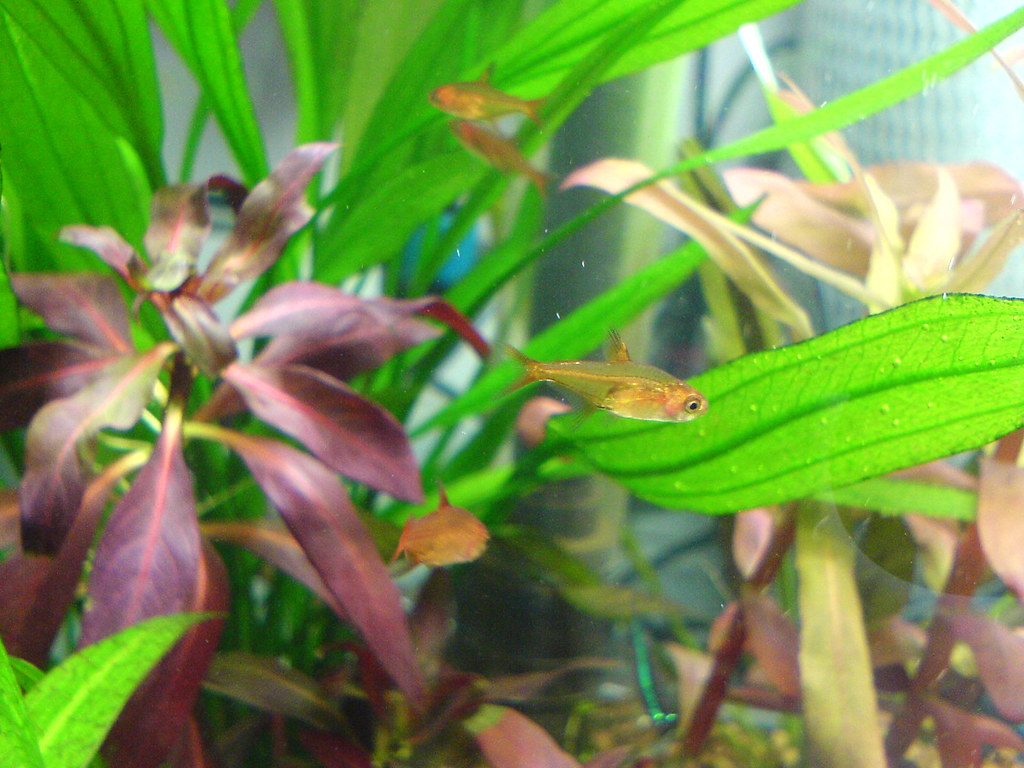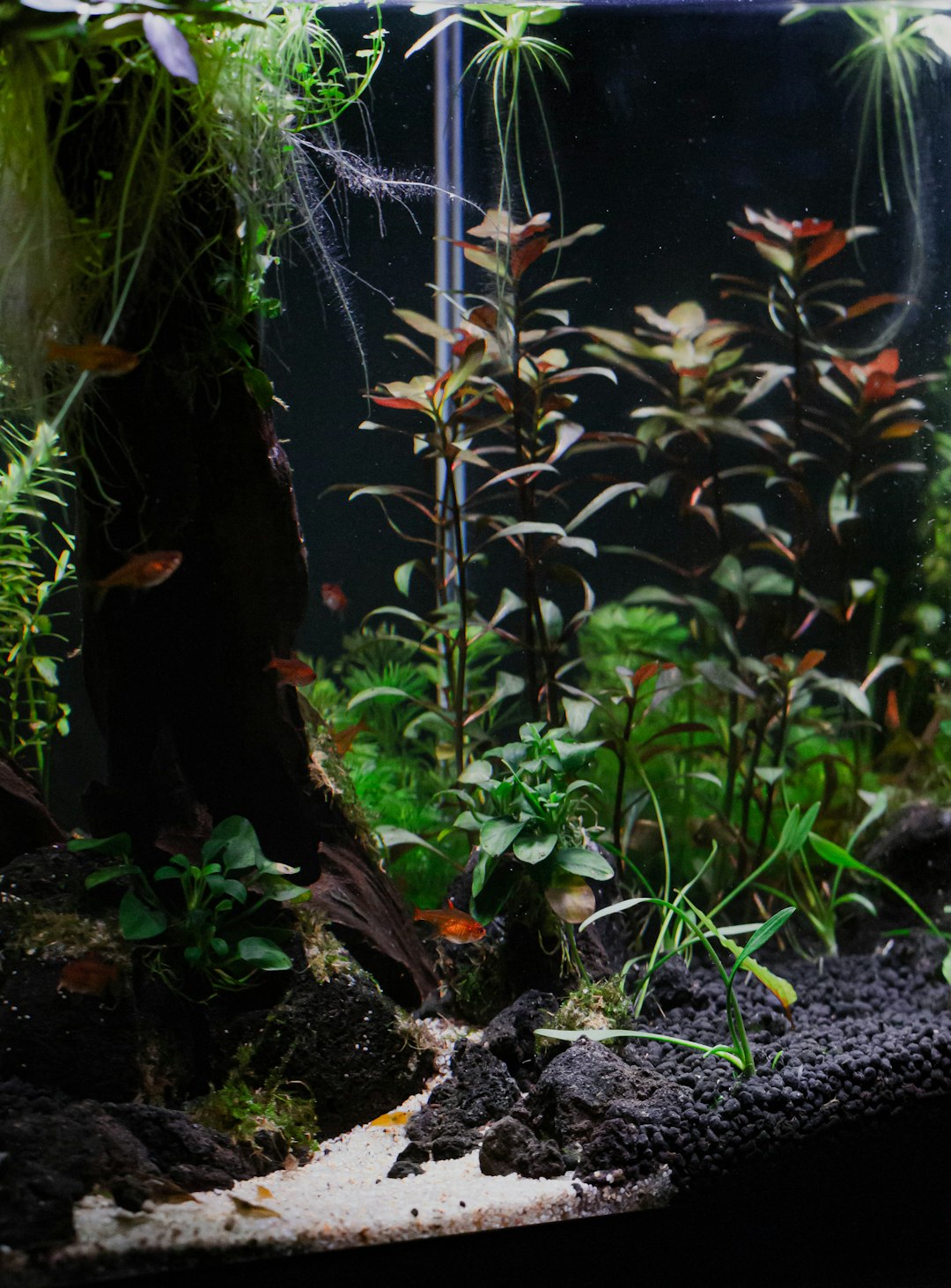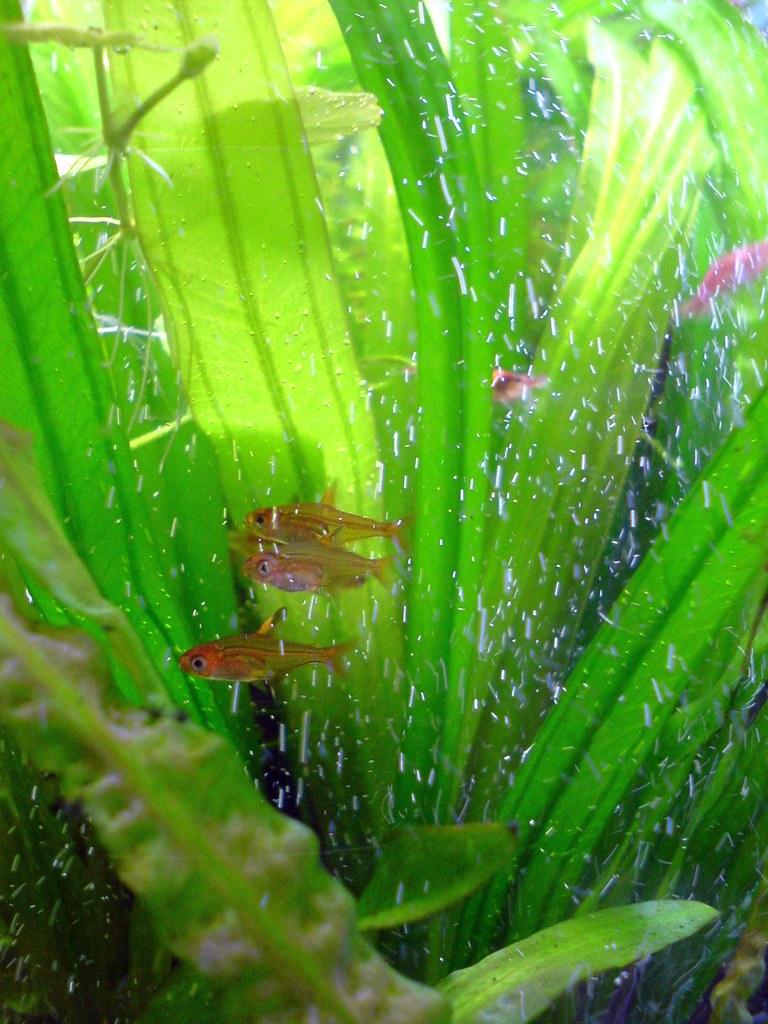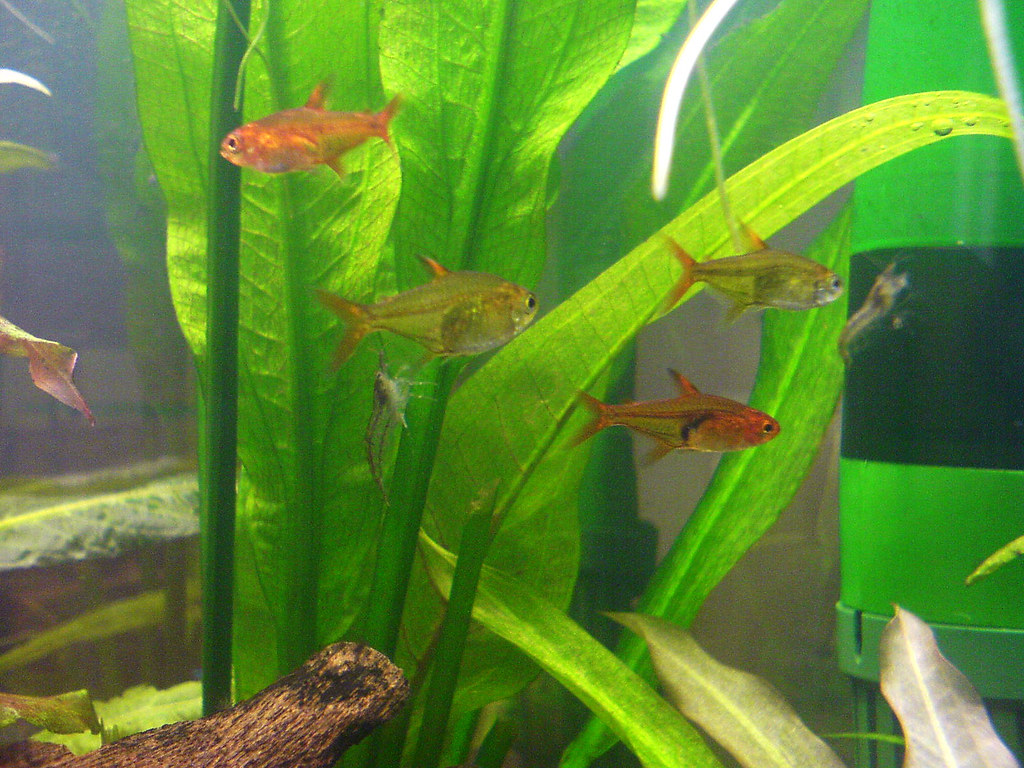
Ember tetras may not light up an aquarium in the literal sense, but their lively presence and striking red-orange hue can surely brighten your underwater world. These tiny, peaceful fish are not just known for their captivating colors but also for their enticing, understated charm. Let's dive deeper into the art of caring for ember tetras, ensuring these luminous swimmers enjoy a full, thriving life in your aquarium.
Creating the Perfect Home
Setting up a cozy, comfortable setting for your ember tetras begins with the right tank. Although these fish can thrive in as small as a 5-gallon tank, they do best in a 10-gallon space or larger, especially as part of a social school of at least six. A dark substrate enhances their colors, and adding live plants and shaded areas creates an environment echoing their natural habitat along the Araguaia River in Brazil. To learn more about their natural setting, check out this detailed overview of the ember tetra.

Use gentle filtration, like a sponge filter, to maintain water quality without disrupting their environment with strong currents. Keep in mind their ideal water parameters: a slightly acidic to neutral pH of 5.5 to 7.5 and temperatures ranging from 73°F to 80°F. A liquid-based test kit will be your best friend to ensure optimal conditions are met consistently. If you’re unsure whether consistent warmth is necessary for your tetras, read Do Tetras Need a Heater? Essential Care Tips Explained.
Maintaining that temperature range is important, so having an efficient device like the FREESEA Aquarium Heater with Digital Display can help you monitor and stabilize water temperature to avoid stress in your tetras.
Understanding Their Social Dynamics

Ember tetras are inherently social and peaceful, showing their true spirited colors when allowed to school together. A gathering of 6-10 embers will see them gently dancing through the water, feeling secure in numbers. Pair them with similarly sized, non-aggressive tank mates such as rasboras, danios, or small catfish, and avoid potential bullies like bettas that may display territorial behavior.
Feeding for Vibrant Health

Diet plays a crucial role in maintaining the vibrant colors and health of ember tetras. Being omnivores, their menu should include high-quality pellets, zooplankton, and small invertebrates, steering clear of flake foods to avoid nutrient loss. Ensuring small, slow-sinking bites will prevent any digestion issues given their tiny mouths. A great option is TetraPro Tropical Color Crisps, which are enhanced for better nutrition absorption.
You might consider supplementing their diet with frozen foods occasionally. Aim to feed them once or twice a day with small meals. Here's a quick reference for their dietary needs:
| Food Type | Frequency | Notes |
|---|---|---|
| Pellets | Daily | Main staple |
| Frozen Foods | Occasionally | As a treat |
| Plant Material | Daily | For balanced nutrition |
Breeding and Beyond

For those interested in expanding their school of ember tetras, breeding could be an exciting next step. These egg-layers require a separate breeding tank with a secure substrate cover like craft mesh or java moss to shield eggs from predators—namely the parents themselves.
Males are known to chase females to signal breeding time. Following a rich, high-protein diet can increase breeding success. Post-spawning, promptly move the adults out to prevent them from consuming the fry. Young tetras start with infusoria and transition to baby brine shrimp as they grow. For more insights into their potential longevity and life stages, check out this guide on ember tetra lifespan.
Regular Maintenance for Long-Term Wellbeing

High water quality is pivotal, not just for adults but also for fry. Routine water changes and consistent feeding schedules go a long way in sustaining their overall wellbeing.
By embracing these caring insights, you can take great strides towards creating a conducive environment for ember tetras, balancing between offering them a space reminiscent of their natural habitat and nurturing their social and dietary needs. Do you have any quirky experiences with ember tetras, or perhaps some tips you've picked up along the way? Share your stories in the comments below!
Frequently Asked Questions
Are ember tetras hard to keep?
Ember tetras are considered easy to care for, making them a great choice for both beginners and experienced aquarists. Their peaceful nature, hardiness, and adaptability to stable water conditions ensure they thrive in most aquarium setups.
What water conditions do ember tetras need?
Ember tetras thrive in water temperatures between 72°F and 84°F with a slightly acidic to neutral pH level. They prefer soft to moderately hard water and stable, well-maintained conditions in an established aquarium.
How do you keep ember tetras healthy?
To keep ember tetras healthy, maintain clean water by performing regular small water changes, feed them a varied diet in small portions multiple times a day, and ensure they have plenty of live or artificial plants for hiding and exploring.
Can ember tetras live with other fish?
Yes, ember tetras are peaceful and make excellent tank mates for other calm freshwater fish such as neon tetras, rasboras, or guppies. Avoid housing them with large or aggressive species to prevent stress or harm.
What do ember tetras eat?
Ember tetras are omnivorous and enjoy high-quality flake food, micro-pellets, daphnia, and brine shrimp. A varied diet ensures they receive all the nutrients needed for vibrant color and health.
I hope you found this dive into the world of ember tetras as enchanting as I do! Their gentle flickers of color and peaceful nature make them a delightful addition to any aquarium. If you're as captivated by these fiery little fish as I am and want to explore more about them, why not check us out on Pinterest where we pin stunning tank ideas and tips? For daily inspiration and behind-the-scenes peeks, you can follow our adventures on Instagram. Or, if you're looking to join a lively conversation, hop over to X (formerly Twitter) or Facebook and become part of our friendly community. We'd love to connect with other fish enthusiasts and hear about your own experiences in crafting serene underwater havens!
